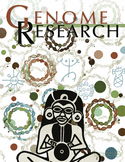Tumor-specific retargeting of an oncogenic transcription factor chimera results in dysregulation of chromatin and transcription
- Mukund Patel1,2,7,
- Jeremy M. Simon1,2,3,7,
- Michael D. Iglesia2,
- Sam B. Wu2,
- Andrew W. McFadden2,
- Jason D. Lieb2,4,5 and
- Ian J. Davis1,2,5,6,8
- 1Department of Genetics, University of North Carolina at Chapel Hill, Chapel Hill, North Carolina 27599, USA;
- 2Lineberger Comprehensive Cancer Center, University of North Carolina at Chapel Hill, Chapel Hill, North Carolina 27599, USA;
- 3Curriculum in Bioinformatics and Computational Biology, University of North Carolina at Chapel Hill, Chapel Hill, North Carolina 27599, USA;
- 4Department of Biology, University of North Carolina at Chapel Hill, Chapel Hill, North Carolina 27599, USA;
- 5Carolina Center for Genome Sciences, University of North Carolina at Chapel Hill, Chapel Hill, North Carolina 27599, USA;
- 6Department of Pediatrics, University of North Carolina at Chapel Hill, Chapel Hill, North Carolina 27599, USA
-
↵7 These authors contributed equally to this work.
Abstract
Chromosomal translocations involving transcription factor genes have been identified in an increasingly wide range of cancers. Some translocations can create a protein “chimera” that is composed of parts from different proteins. How such chimeras cause cancer, and why they cause cancer in some cell types but not others, is not understood. One such chimera is EWS–FLI, the most frequently occurring translocation in Ewing Sarcoma, a malignant bone and soft tissue tumor of children and young adults. Using EWS–FLI and its parental transcription factor, FLI1, we created a unique experimental system to address questions regarding the genomic mechanisms by which chimeric transcription factors cause cancer. We found that in tumor cells, EWS–FLI targets regions of the genome distinct from FLI1, despite identical DNA-binding domains. In primary endothelial cells, however, EWS–FLI and FLI1 demonstrate similar targeting. To understand this mistargeting, we examined chromatin organization. Regions targeted by EWS–FLI are normally repressed and nucleosomal in primary endothelial cells. In tumor cells, however, bound regions are nucleosome depleted and harbor the chromatin signature of enhancers. We next demonstrated that through chimerism, EWS–FLI acquired the ability to alter chromatin. Expression of EWS–FLI results in nucleosome depletion at targeted sites, whereas silencing of EWS–FLI in tumor cells restored nucleosome occupancy. Thus, the EWS–FLI chimera acquired chromatin-altering activity, leading to mistargeting, chromatin disruption, and ultimately, transcriptional dysregulation.
Footnotes
-
↵8 Corresponding author.
E-mail ian_davis{at}med.unc.edu.
-
[Supplemental material is available for this article.]
-
Article published online before print. Article, supplemental material, and publication date are at http://www.genome.org/cgi/doi/10.1101/gr.125666.111.
- Received May 1, 2011.
- Accepted September 13, 2011.
- Copyright © 2012 by Cold Spring Harbor Laboratory Press











